A Local’s Review of Royal Palace Amsterdam
7 min readThe Royal Palace Amsterdam (also known as Koninklijk Paleis van Amsterdam or Paleis op de Dam) is one of the most significant landmarks in the Netherlands. It’s in the center of Amsterdam, opposite the War Memorial and next to the Nieuwe Kerk. The palace’s history dates back to the 17th Century when it was initially built as the city hall for the magistrates of Amsterdam.
Today, the Royal Palace of Amsterdam is a national monument, one of three palaces in the Netherlands that the Dutch monarch has access to by Act of Parliament.
It’s a significant cultural property and historical monument that attracts visitors from every corner of the earth. The palace is open to the public annually and hosts various exhibitions and events.
Below, you’ll find all of my unique photos from visiting the palace several times to help guide you on the visitor experience. I hope you appreciate this aspect’s uniqueness and the direct personal experience I can offer (after all, I’m an Amsterdam resident).
The Royal Palace of Amsterdam features remarkable architecture that reflects the rich history of the Dutch Golden Age. It features a neoclassical facade, a central dome, and four wings surrounding a large courtyard.
The palace’s interior is equally impressive, with lavish decorations, marble floors, and intricate murals. Visitors can explore the palace’s many rooms, including the Royal Apartments, the Council Chamber, and the Citizens’ Hall.
What We Cover
History
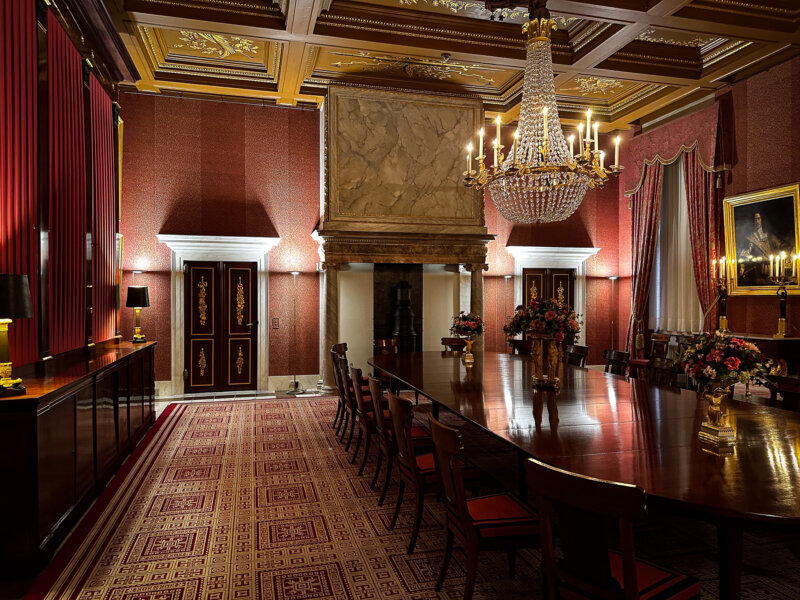

The Royal Palace Amsterdam, located on the west side of Dam Square, was initially built as a city hall for the burgomaster and magistrates of Amsterdam. The celebrated architect Jacob van Campen designed the palace and constructed it entirely of white stone. The palace and city hall’s construction were completed in four phases, with the first section opening in 1655.
Construction
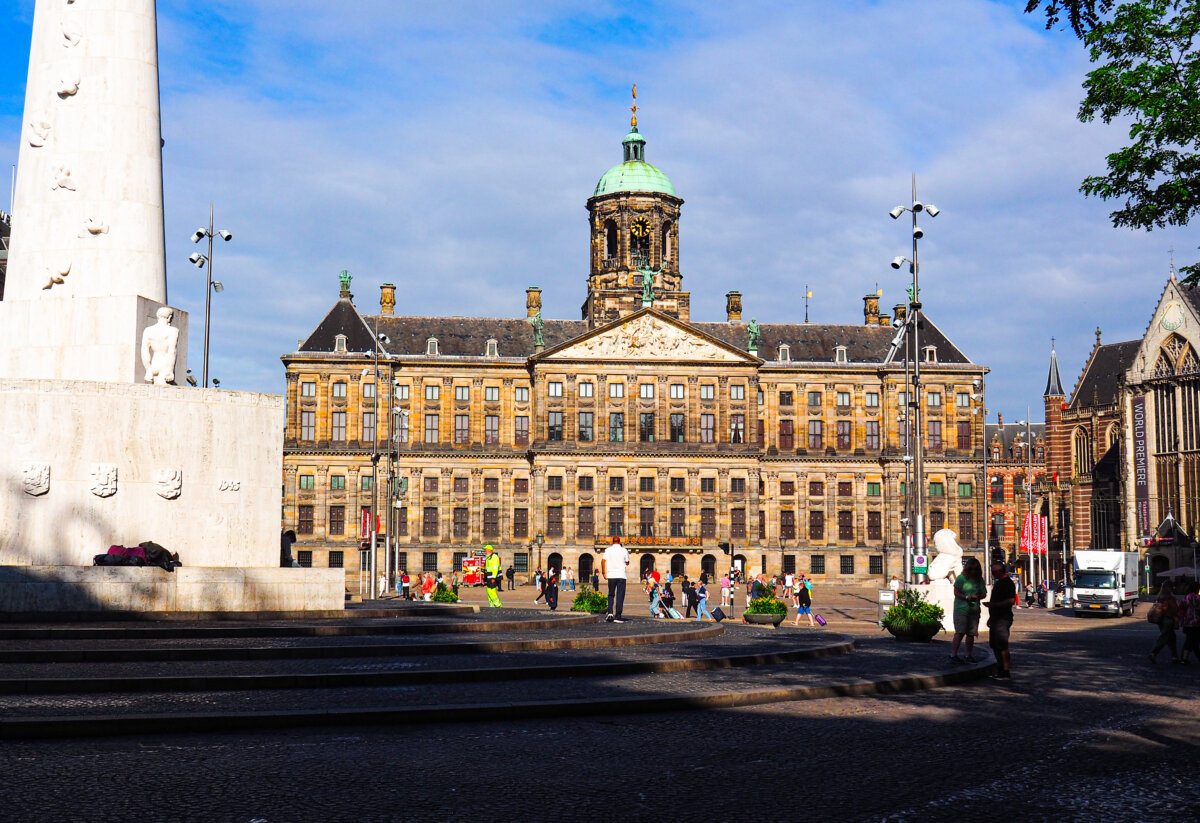

The palace’s design is a perfect example of Baroque architecture. With its grand entrance, impressive staircase, and elegant furnishings, it drips with luxury both inside and out. Construction began in 1648 and was completed in 1655. The second phase began in 1660 and was completed in 1665. The third phase began in 1734 and was completed in 1737.
The final stage was added much later and was not part of van Campen’s original design. Construction began in 1808 following the French-backed revolution and the ascension of Napoleon Bonaparte’s brother to the throne. It was completed in 1815, five years after Louis Napoleon was forced to surrender.
See Related: Famous Buildings in Amsterdam to Visit
Royal Residence
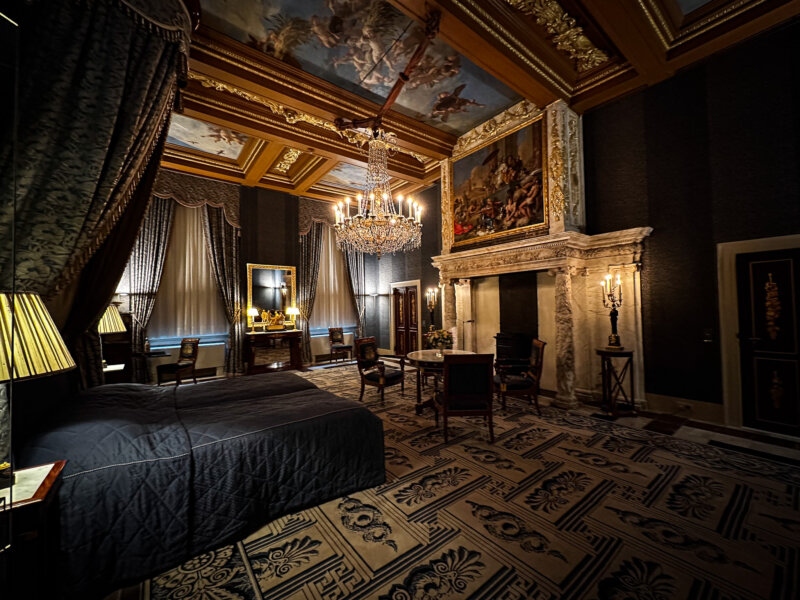

In 1808, the palace became the royal residence of King Louis Napoleon and later became the property of the Dutch Royal House of Orange-Nassau in 1936. Since then, the palace has been used for countless royal functions, including state banquets, official receptions, and royal weddings.
Today, King Willem-Alexander and the Royal House use the palace for entertainment, official functions, and state visits. It is also a residence for state visitors.
Museum


The palace is mainly used as a museum and is frequently open to the public. Visitors can explore the palace’s opulent rooms, including the Throne Room, the Apartments, the Citizen’s Hall (sometimes called Marble Hall), and the Council Chamber (or Moses Hall).
The palace also houses a vast collection of art and historical artifacts, including paintings by Rembrandt and other Dutch masters and a collection of royal carriages.
Image Gallery
See Related: Museums in Amsterdam to Visit
Architecture and Design
Exterior
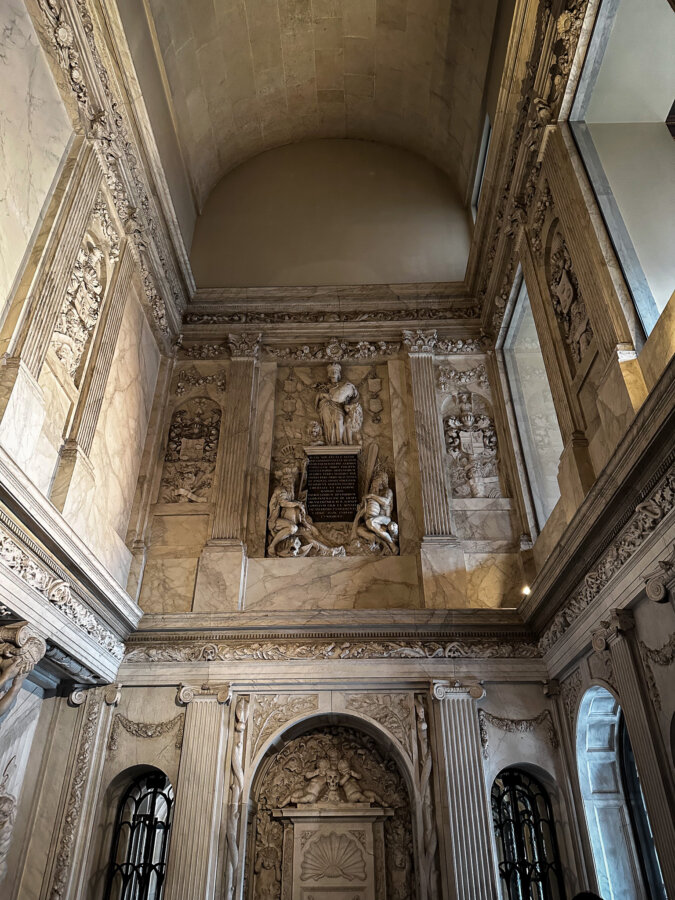

The palace’s architecture is an excellent example of Dutch Classicism. Initially constructed as the Town Hall of Amsterdam in the mid-17th Century, the principal architect, Jacob van Campen, designed the building to reflect the power and wealth of Amsterdam during the period known as the Dutch Golden Age.
Built on 13,659 wooden piles, the palace features a symmetrical facade with a central portico and two wings. The facade has sculptures and reliefs depicting mythological and historical figures from ancient Rome and Greece.
The building’s exterior underwent a few changes over the years. In the early 19th Century, King Louis Napoleon I ordered the palace to be renovated in the French Empire style. The renovation included adding a balcony and replacing the palace’s original dome with a new one.
In the 20th Century, the palace was restored to its original Classicism style, removing many of the traces the former occupiers added.
Interior
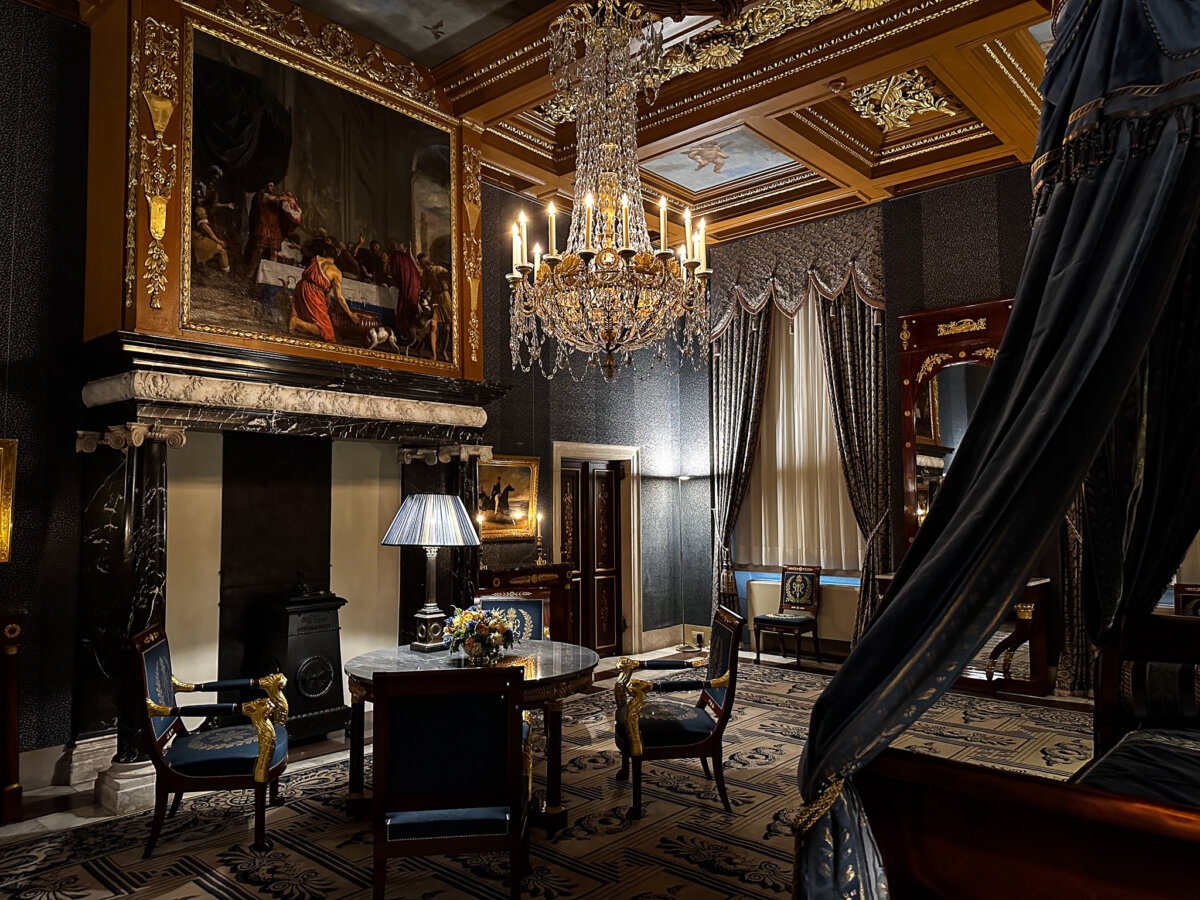

The interior is just as impressive as its exterior, featuring priceless pieces of furniture, artwork, and other decorative objects of historical and artistic significance. This includes tapestries, chandeliers, clocks, and paintings by Dutch masters such as Rembrandt and Ferdinand Bol.
The palace features a few grand rooms that are open to the public. The most notable of these rooms is the Citizens’ Hall, originally built as the town hall’s main hall. The hall has marble columns, a painted ceiling, multiple sculptures, and huge chandeliers. It also features a massive map of the world created in the 17th Century.
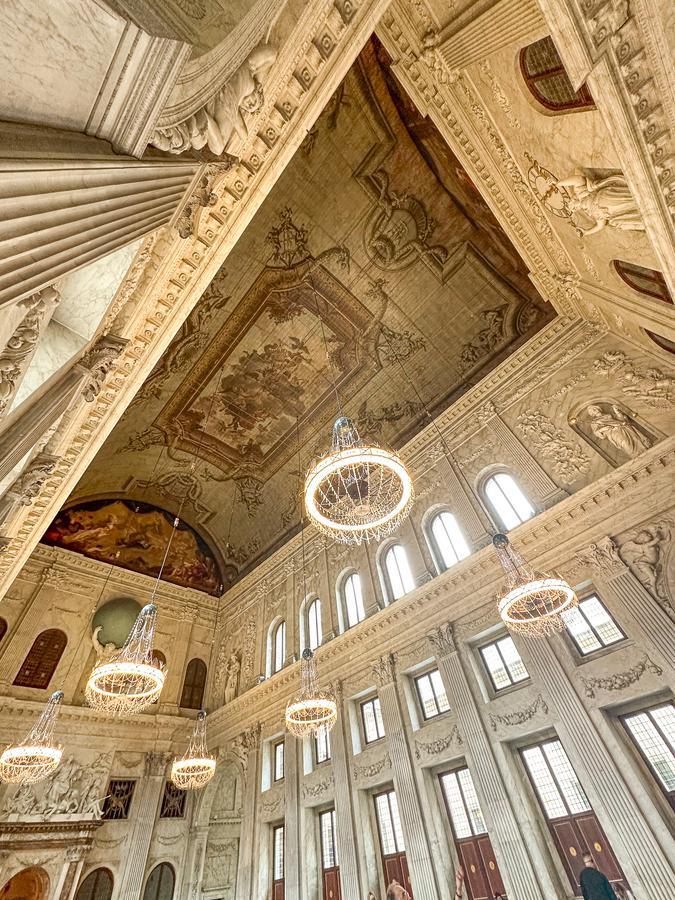

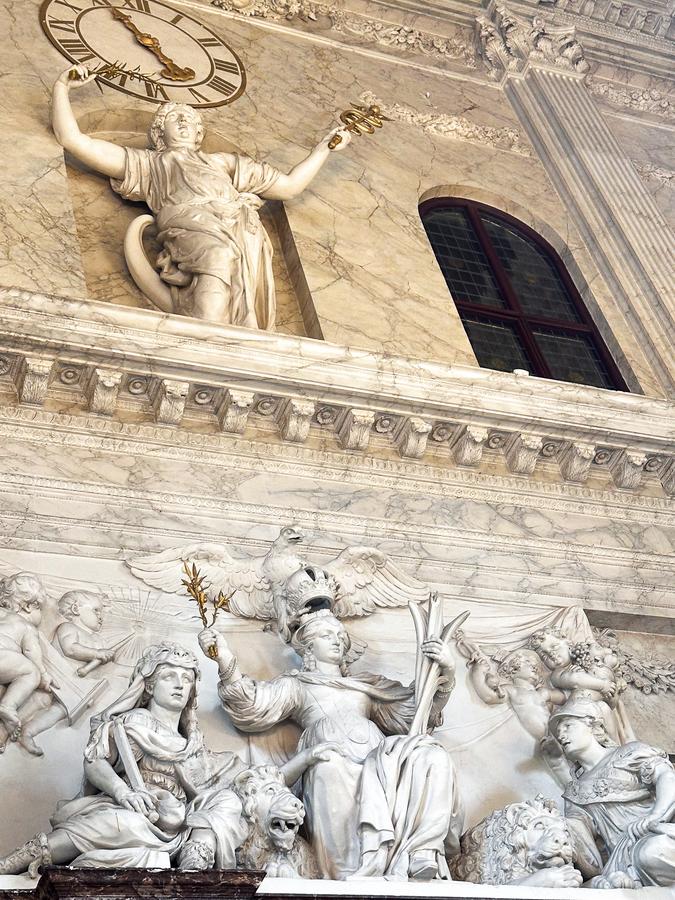

Other notable rooms in the palace include the Council Chamber, the Royal Apartments, and the Throne Room. The Council Chamber was where the city council of Amsterdam held its meetings. The room is dominated by the large painting Moses and the Seventy Elders by famous Dutch painter Jacob de Wit and other paintings of monarchs under an elaborate vaulted ceiling.
The Royal Apartments are a collection of rooms used for civic purposes before becoming royal bedrooms. They still bear the names of their old functions, such as the Orphan Chamber and the Treasury Ordinary. These rooms are beautifully decorated and filled with stunning furniture, although don’t you dare take a seat!
The Throne Room is an art lover’s dream. It features flat and vaulted ceilings adorned with stunning frescoes and glistening chandeliers. Here, you’ll find numerous portraits and crests of members of the House of Orange.
See Related: Rijksmuseum Travel Guide: What to Know When Visiting
Art and Decorations
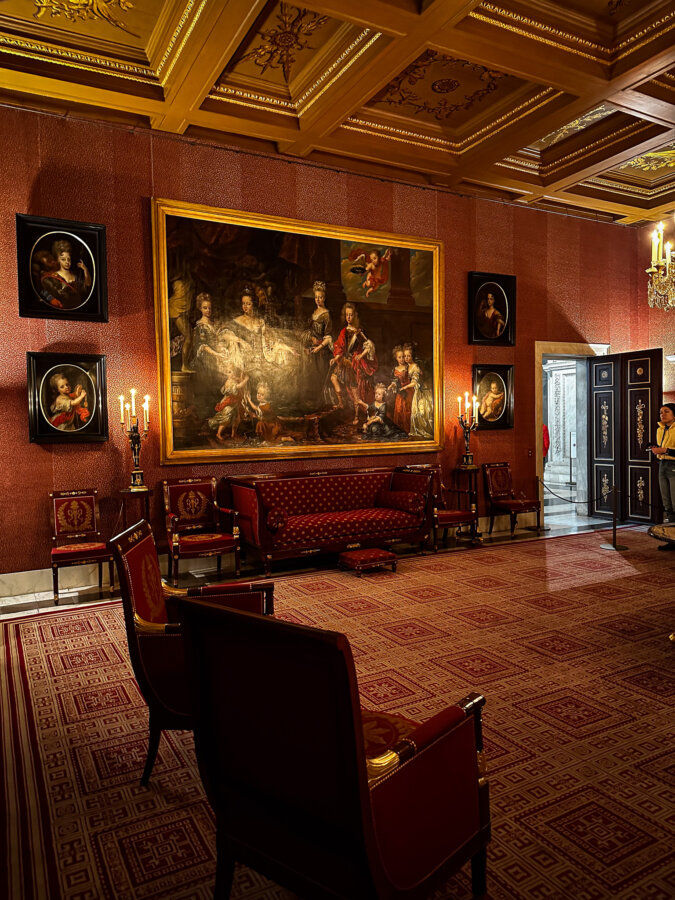

The Royal Palace of Amsterdam is famous for its rich and imposing decorations. The central theme, featured in much of the decoration, was the power of the city authorities in Amsterdam in particular and the far reach of the Dutch Republic in general. The palace is home to many paintings, sculptures, and pieces of furniture that reflect the grandeur of the building.
Paintings and Sculptures
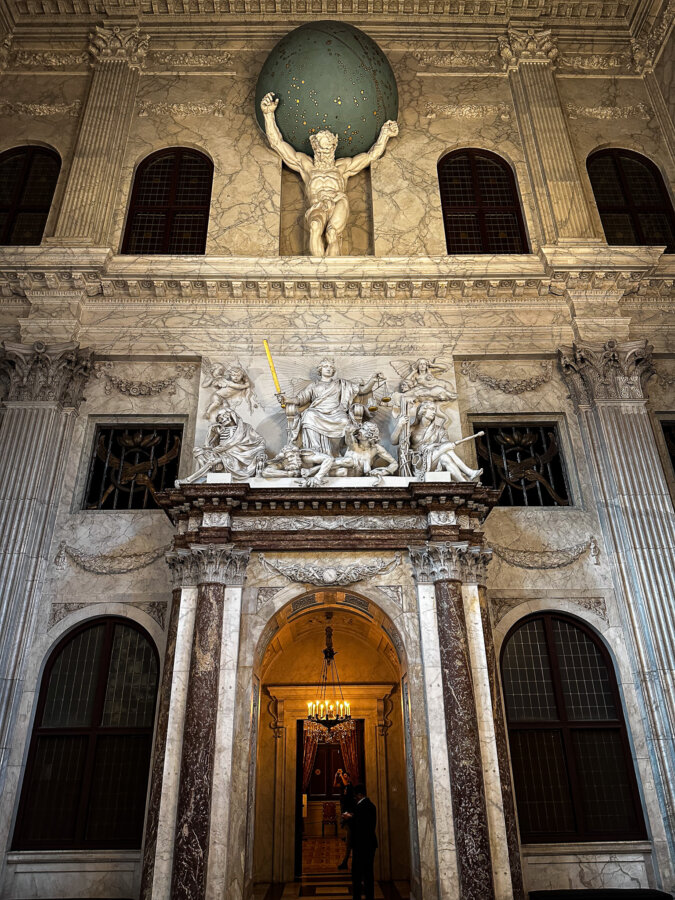

The Royal Palace of Amsterdam’s paintings and sculptures tell numerous stories from when the palace was still the royal family and Amsterdam’s Town Hall. These unique works of art were crafted by renowned artists such as Rembrandt and Ferdinand Bol. These works of art are a vital part of the palace’s rich history and add to its grandeur.
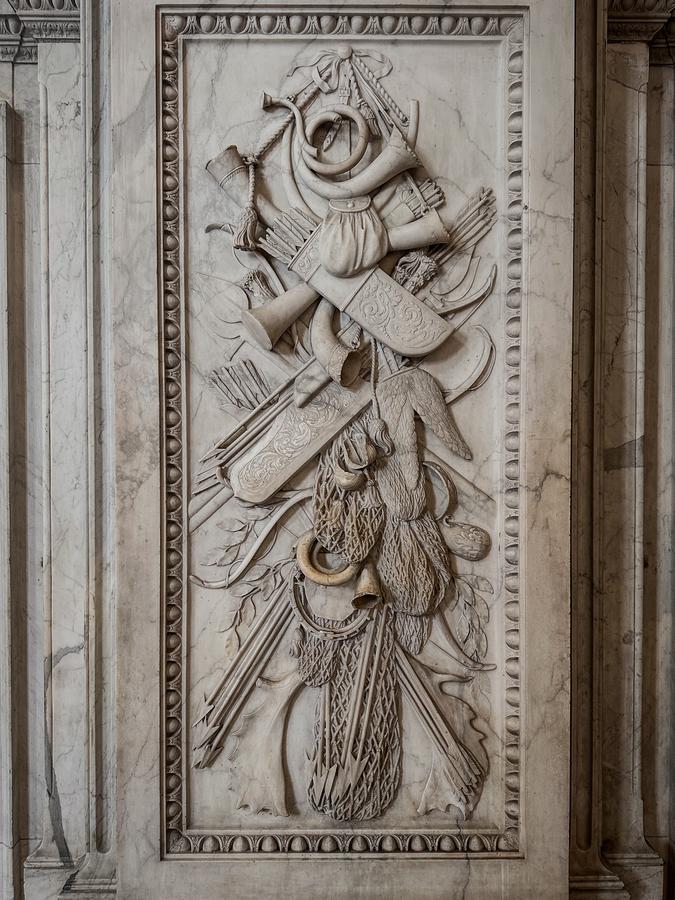



Furniture and Decor
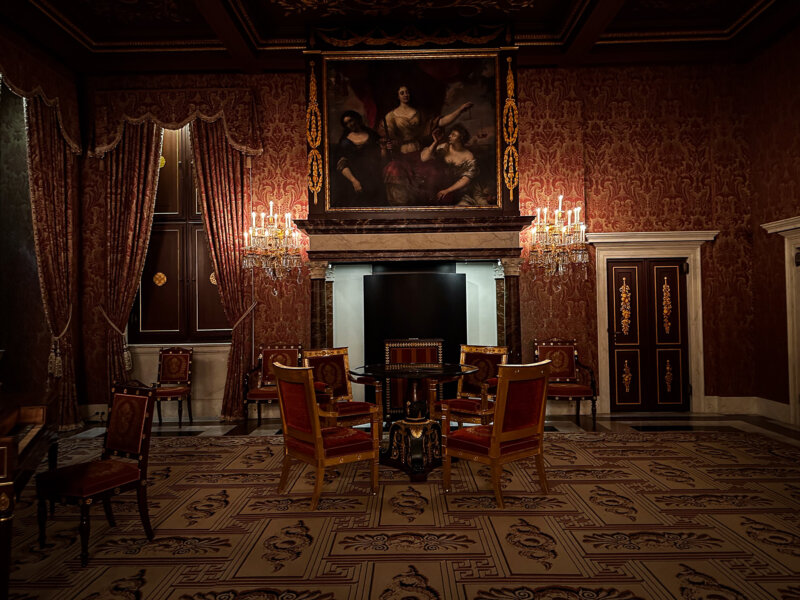

The furniture and decor are just as impressive as its paintings and sculptures. The Empire furniture brought in by the younger Napoleon has been restored to its former glory, and the tiger skin carpets of the Treasury Ordinary (Louis’ old bedroom) are the originals.
In other rooms, 17th-century patterns decorate the walls and curtains. The palace’s furniture and decor are a testament to the grandeur and power of Amsterdam and the Dutch Republic, as well as the French Imperial style and elan.
Tribunal
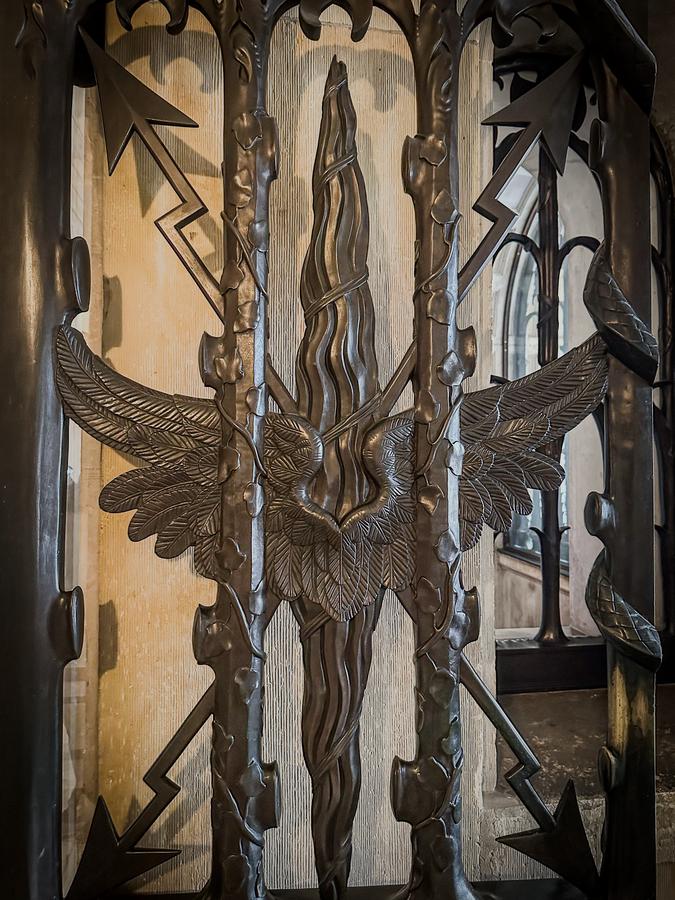

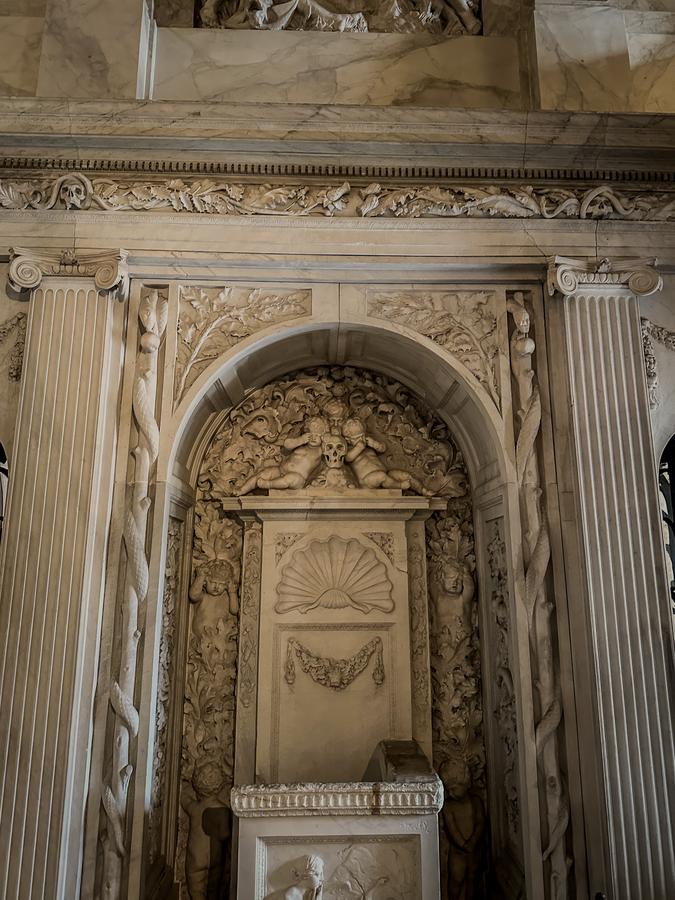

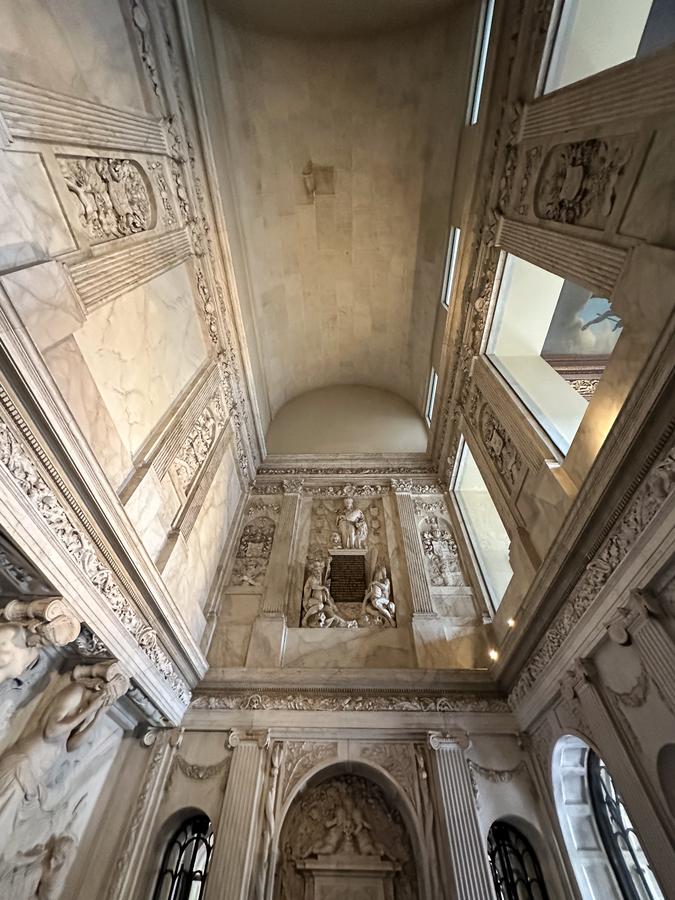

The Tribunal is a significant historical feature that offers visitors a glimpse into the palace’s judicial past. Since the palace was originally a city hall, justice was administered in this space. Today, tourists can explore the Tribunal and appreciate its historical importance within the grandeur of the palace.
It stands as a testament to the palace’s multifaceted history beyond its royal associations, providing a deeper understanding of the societal functions the building has served over the centuries. Visiting the Tribunal is necessary for those interested in Amsterdam’s legal heritage.
See Related: Where to Stay in Amsterdam
Visitor Information
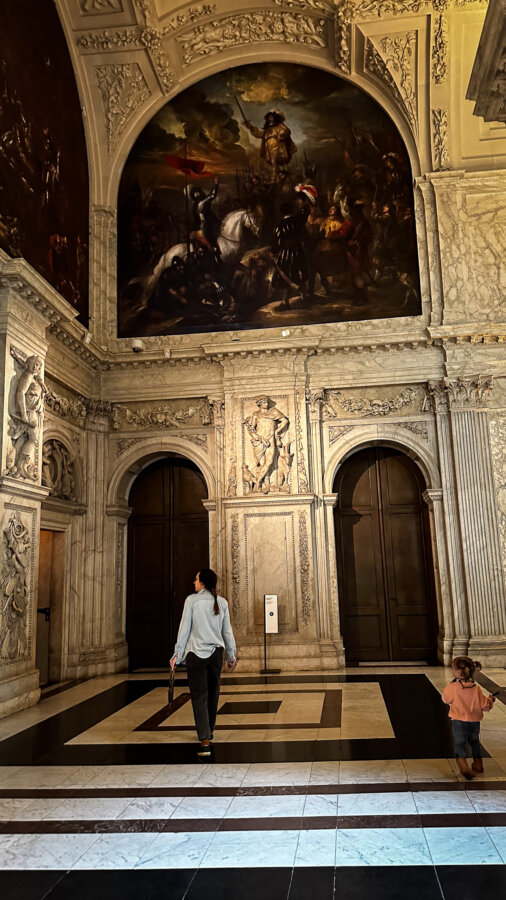

This m is a highly recommended destination for wanderers discovering the city of Amsterdam, so here are some important details to know before you go.
Hours and Admission
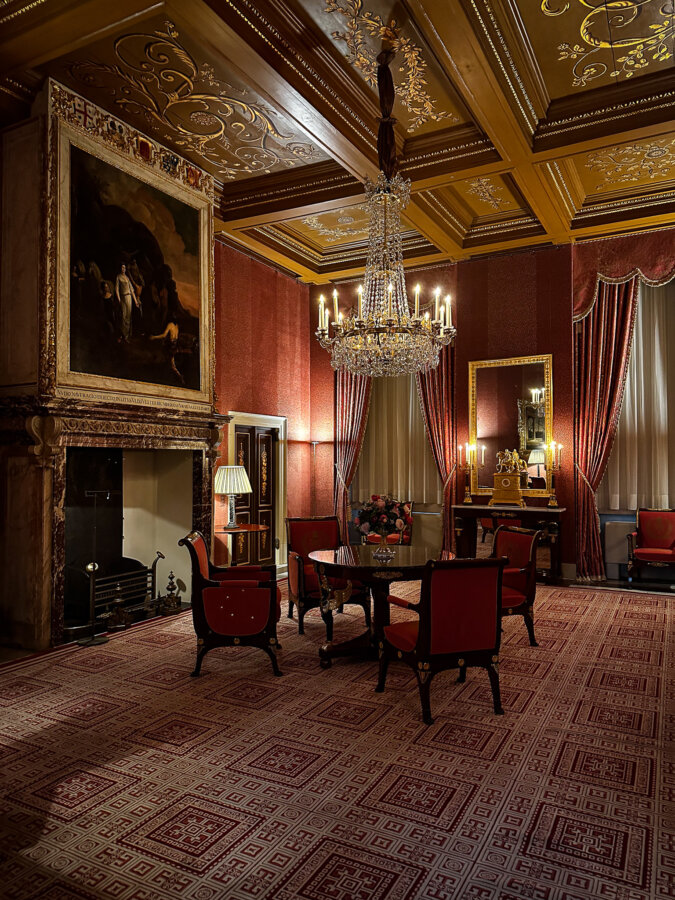

The Royal Palace of Amsterdam is open to the public most days of the year. Hours vary depending on the season, so checking the official website for up-to-date information is best. Admission prices also vary, with discounts available for children, students, and seniors. It’s important to note that tickets for royal events must be purchased in advance, as they are unavailable for sale at the palace.
Guided Tours
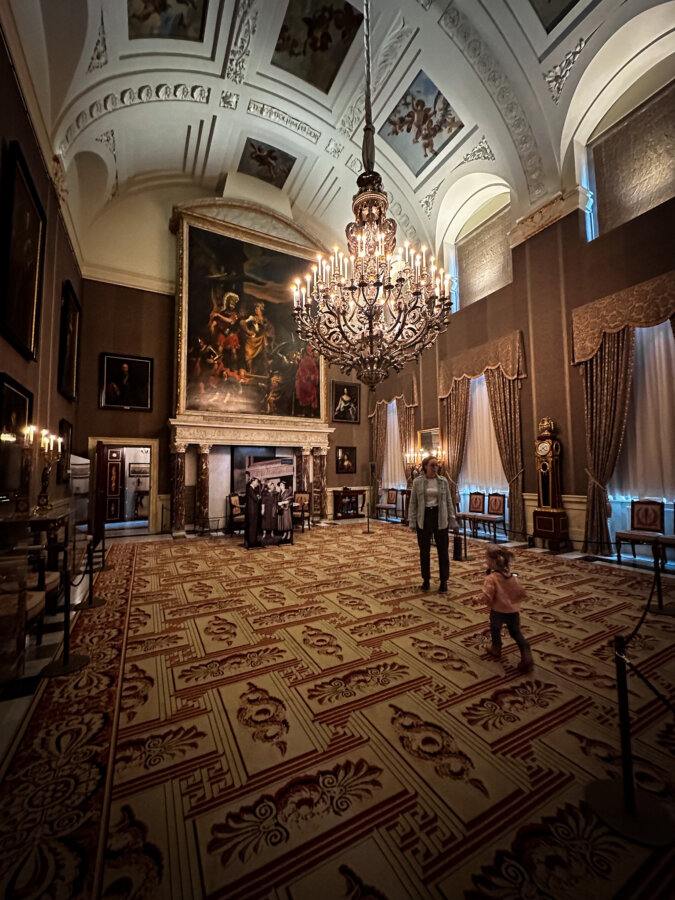

For those who want a more in-depth experience, guided tours are available. These tours are led by knowledgeable guides who can provide insight into the history and architecture of the palace. Audio tours are also available in multiple languages, including English, Dutch, and Spanish. It’s recommended that you book a tour in advance to ensure the availability of an audio guide.
Accessibility
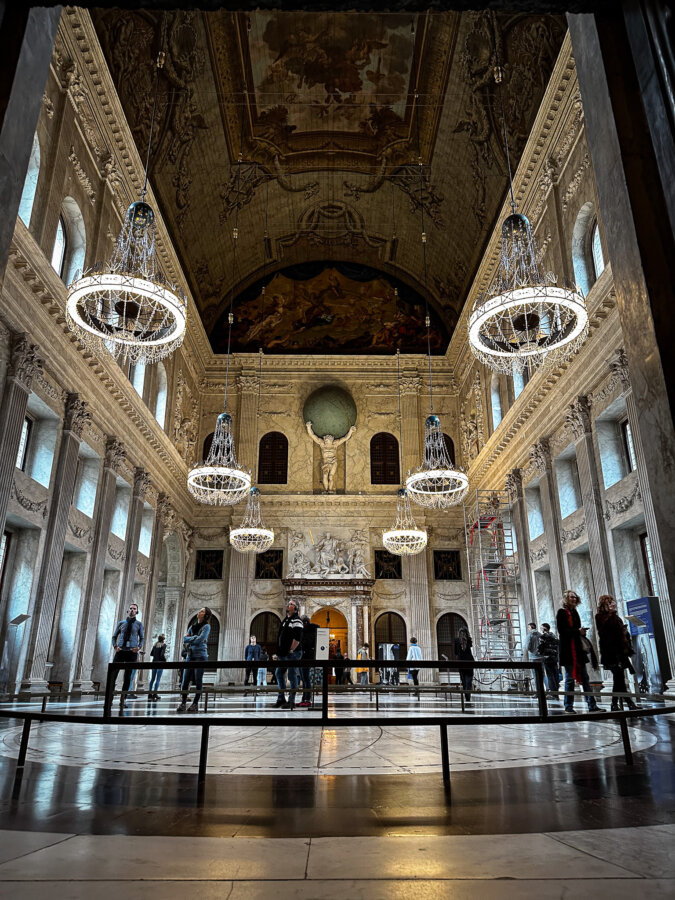

The Royal Palace of Amsterdam is wheelchair accessible, with elevators to reach all floors. Service animals are also allowed inside the palace. To ensure a smooth visit, it’s recommended that you contact the palace in advance if you need any specific accessibility.
Where to Stay Near the Royal Palace of Amsterdam
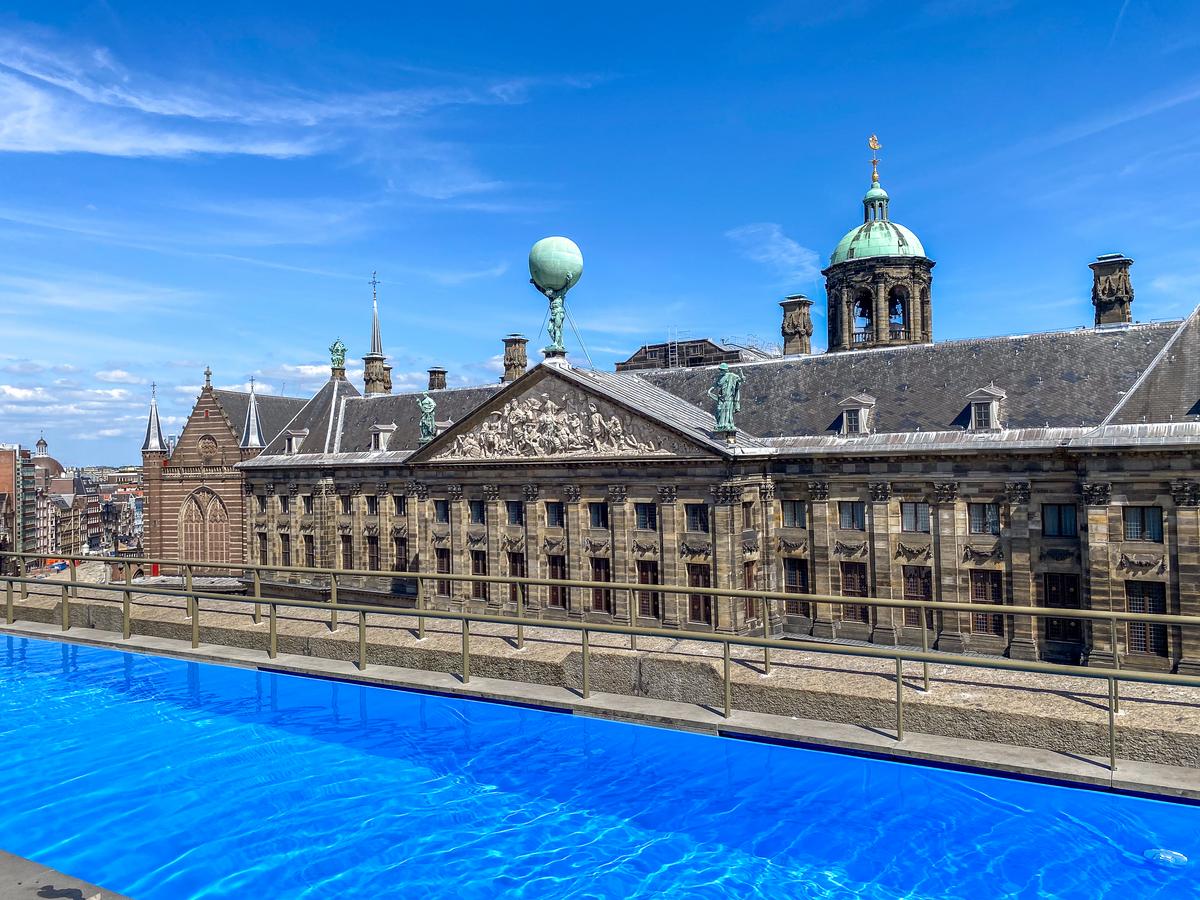

While people can stay at the Royal Palace of Amsterdam, they must be on a state visit, which counts most of us out! Alternatively, you can stay nearby at the incredibly hip W Amsterdam, as pictured above (just look at those rooftop views), or push the boat out and be treated like royalty at Hotel TwentySeven, one of the most luxurious small hotels in the world.
Related Resources



